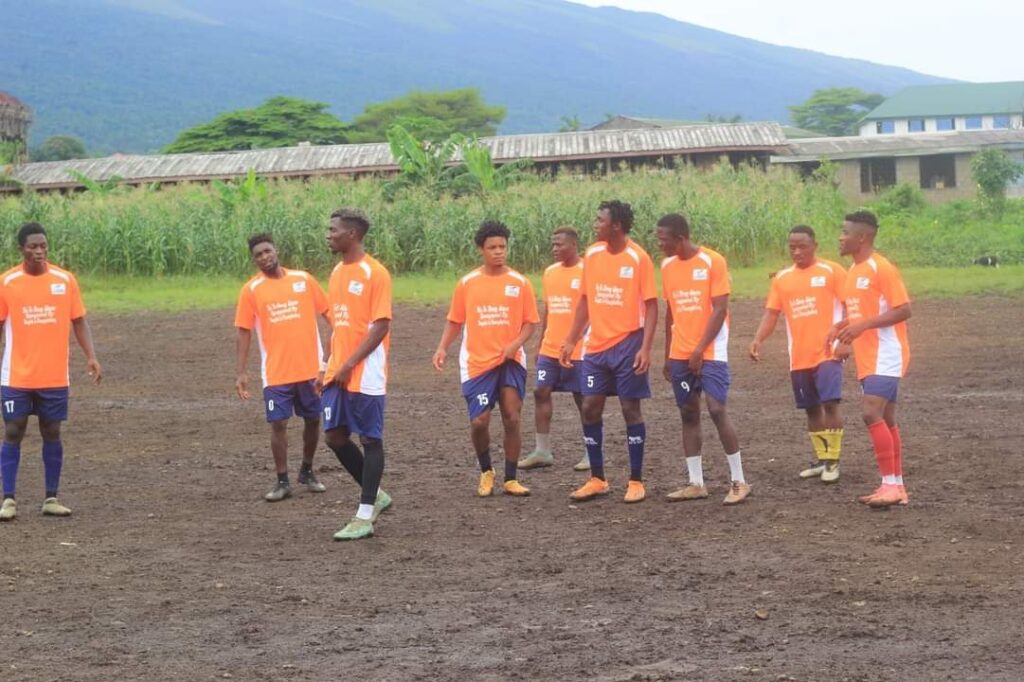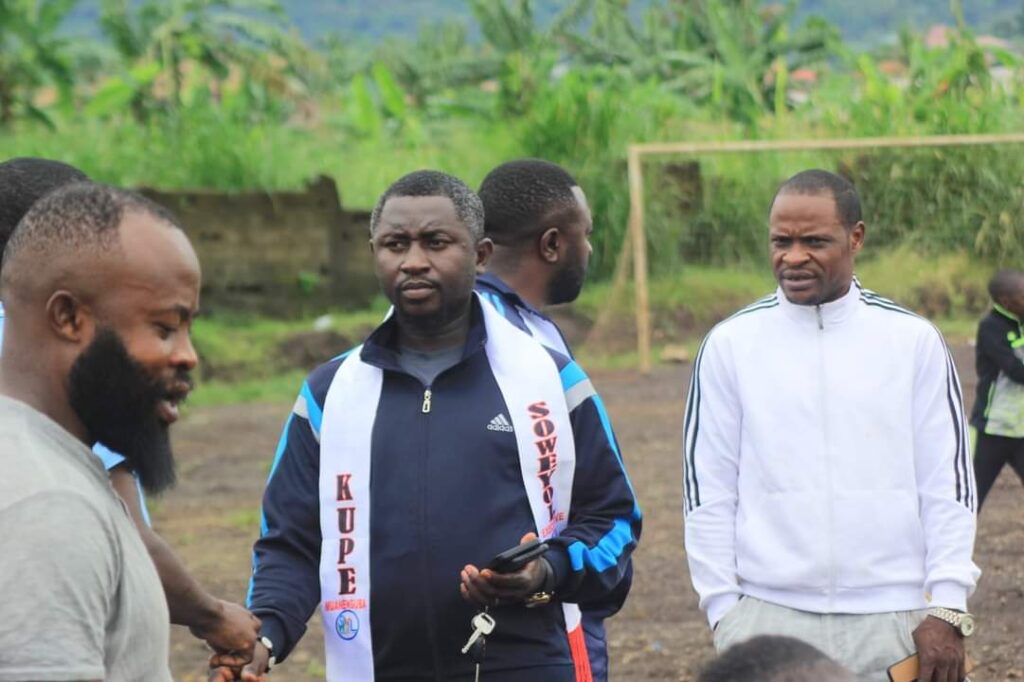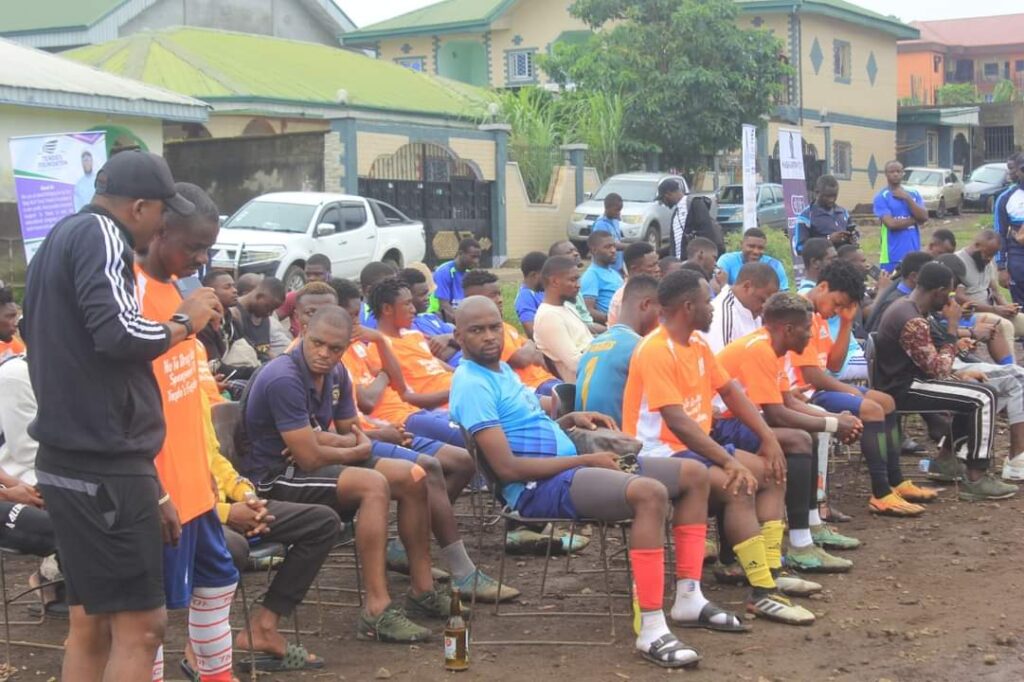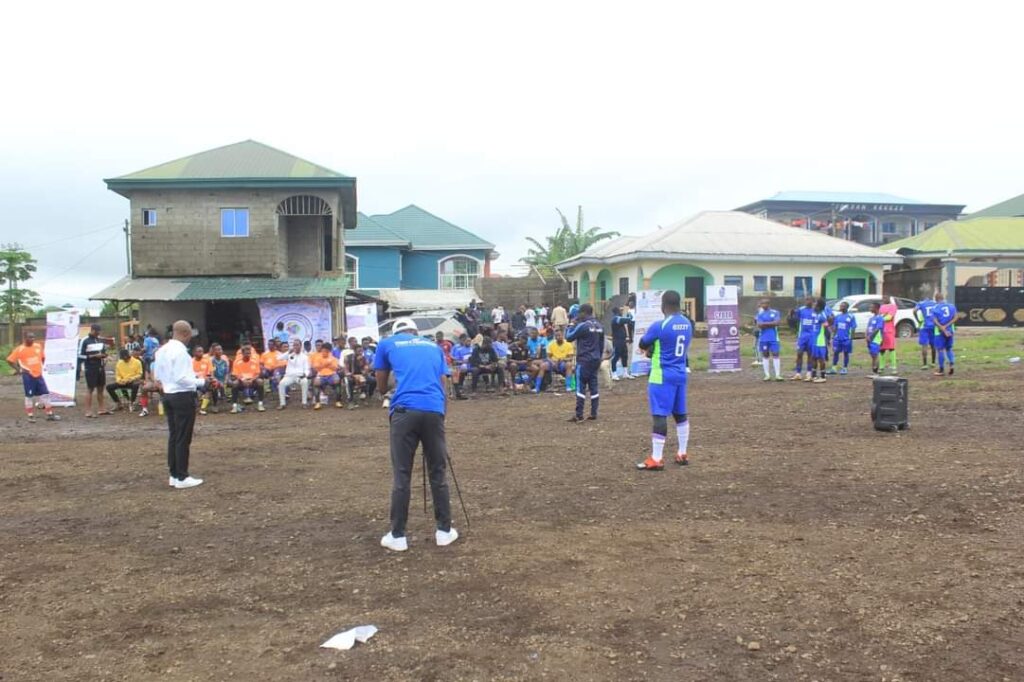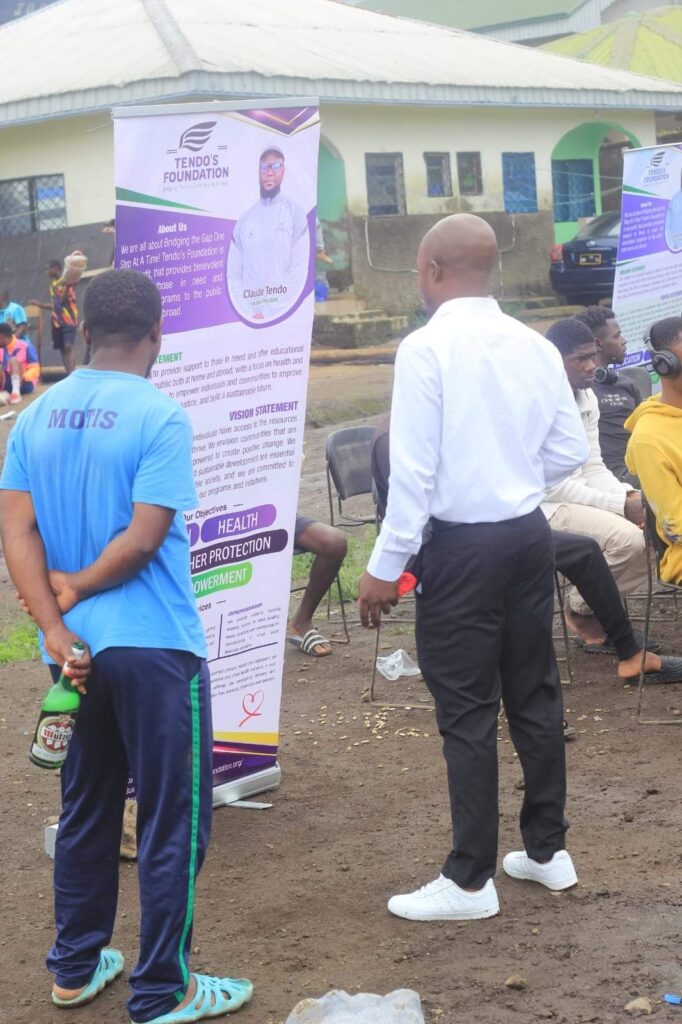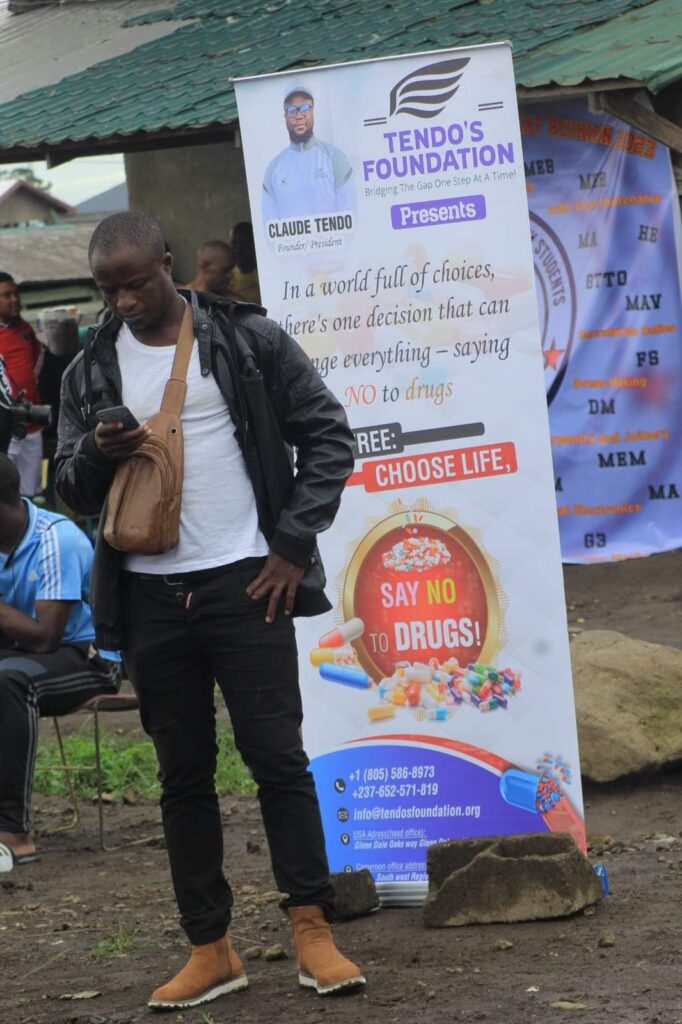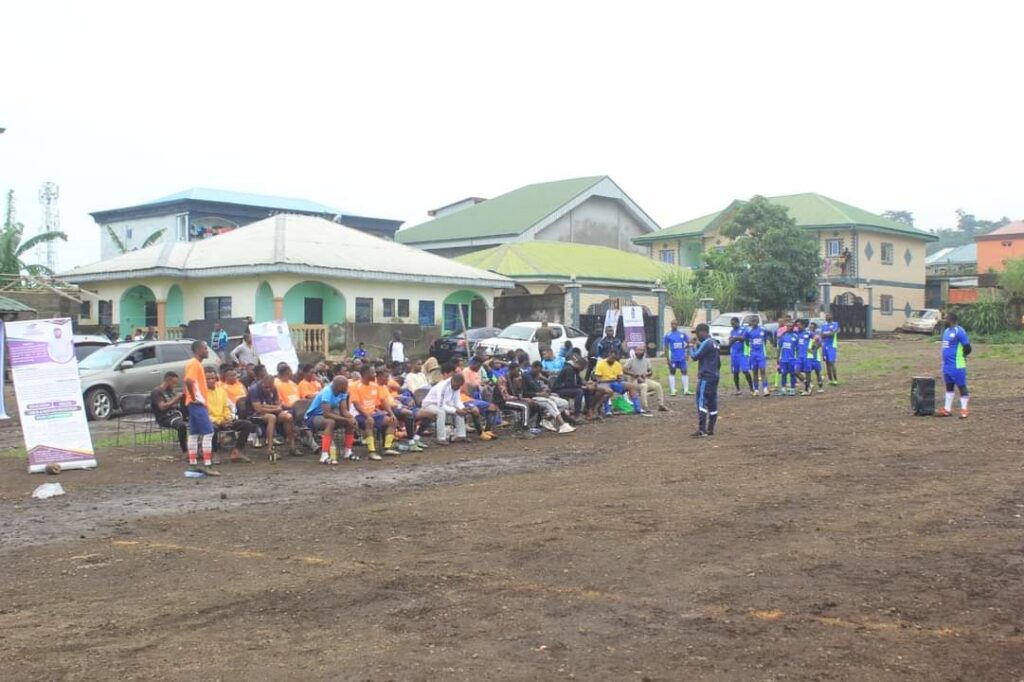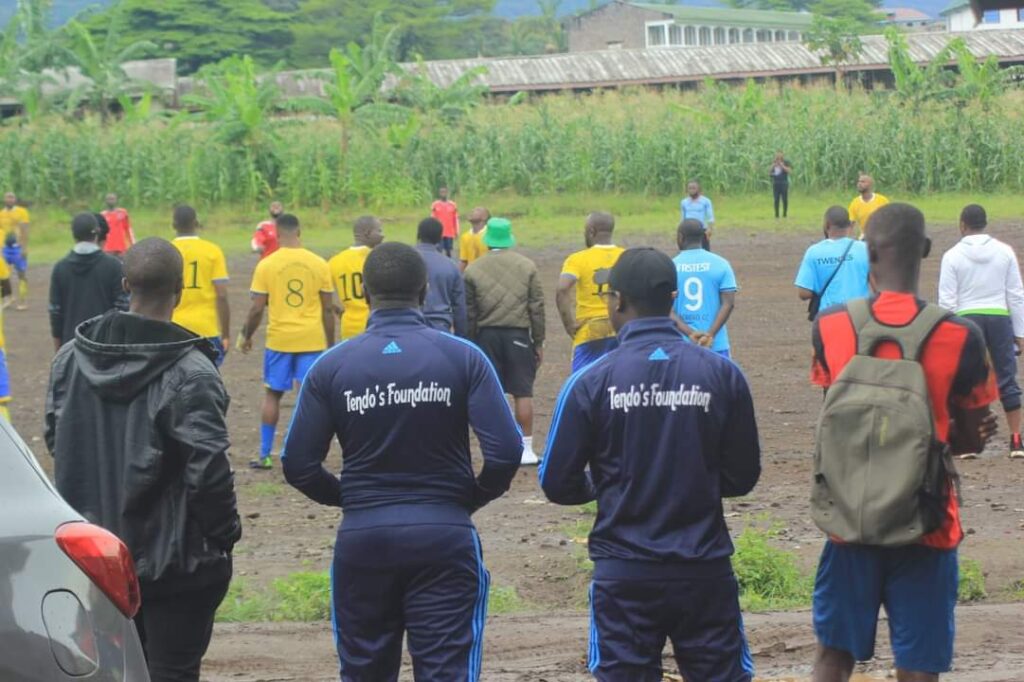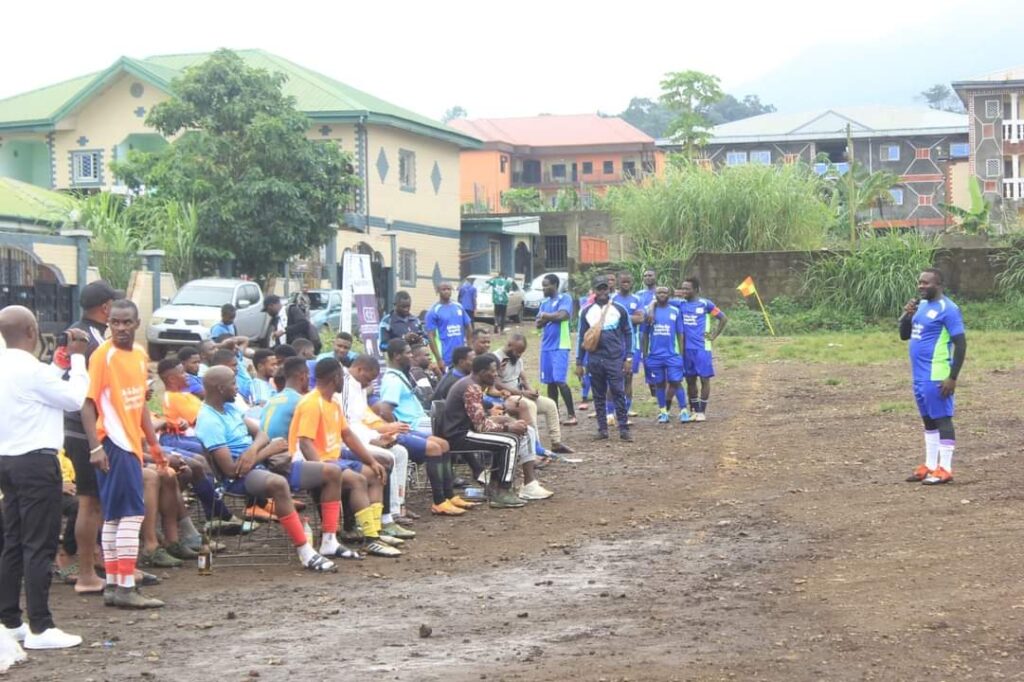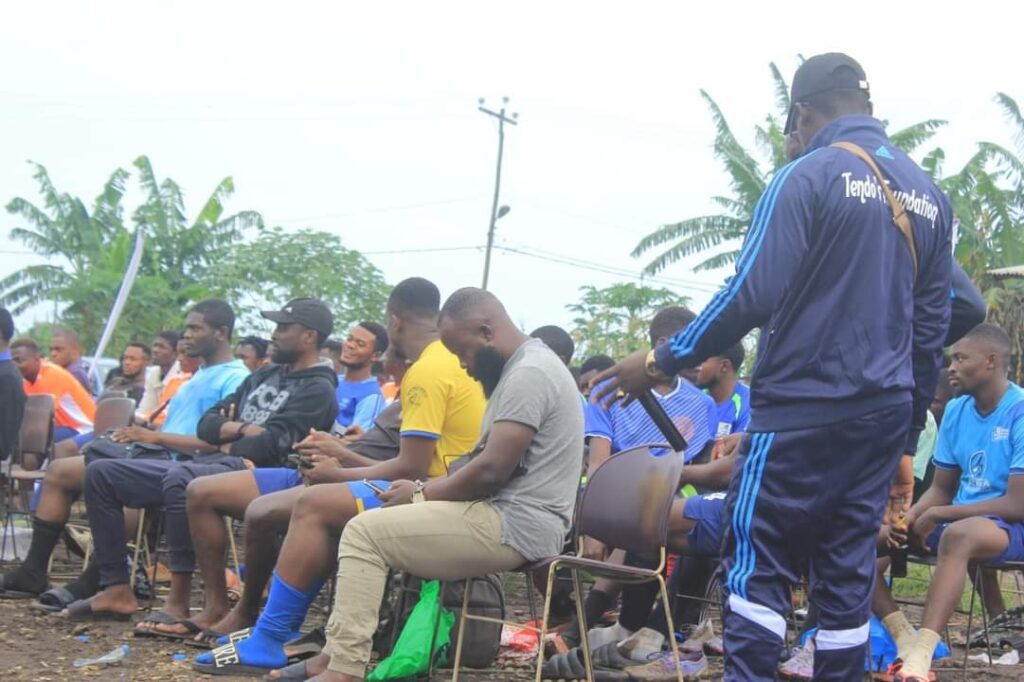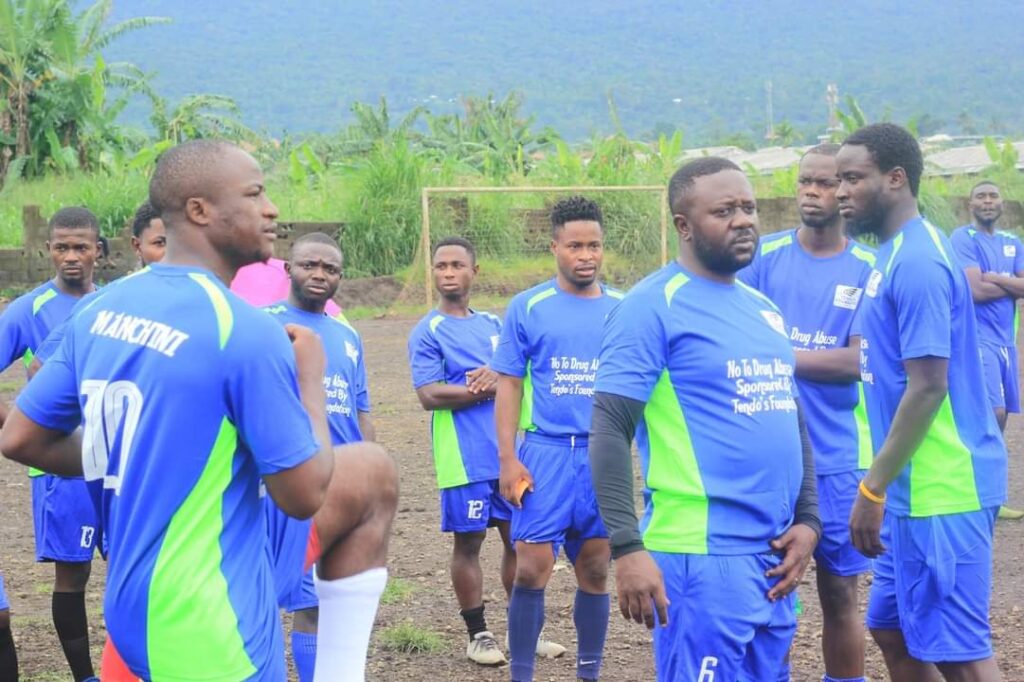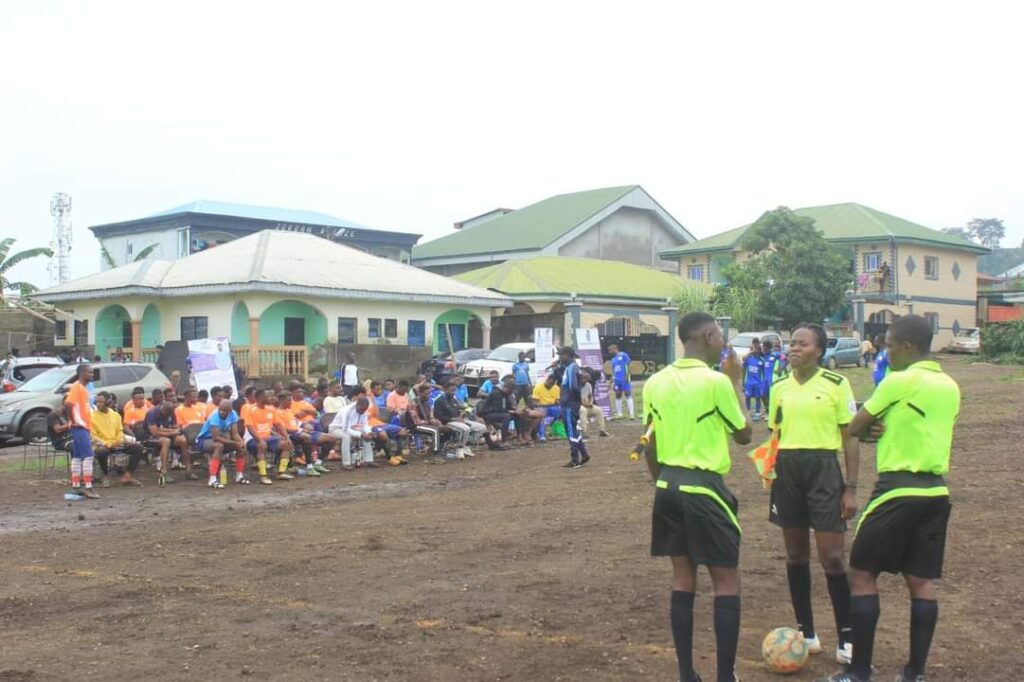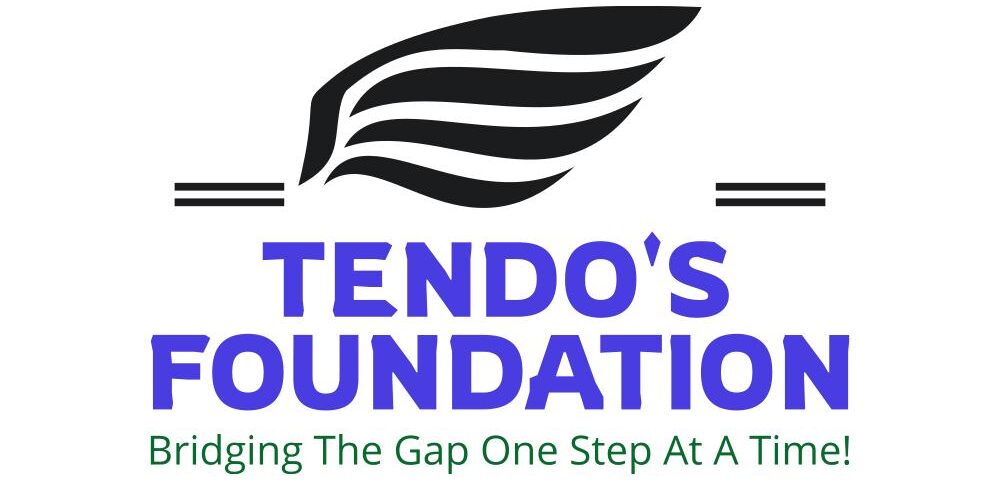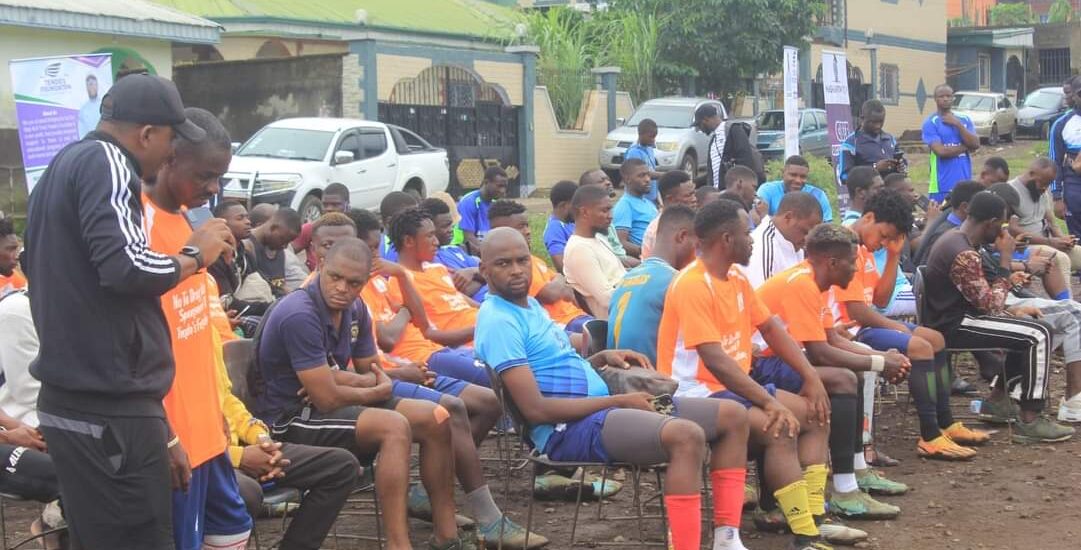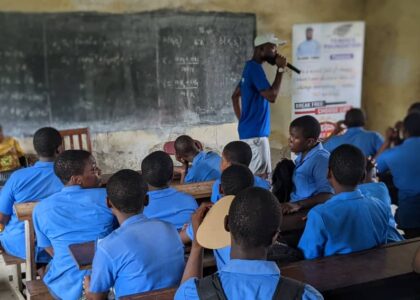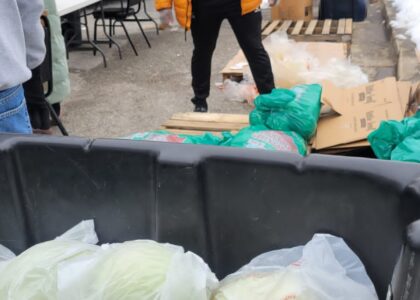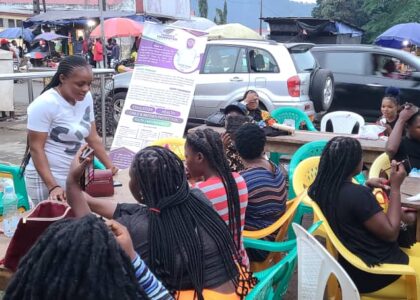Date: November 19, 2023
This report outlines the No to Drug Abuse Campaign Football Match organized by Tendos Foundation in Buea. The project aimed to raise awareness about the dangers of drug abuse among youths and promote a drug-free lifestyle. This report highlights the impact of the campaign on the youths and sheds light on the impact of drugs in the neighborhood.
Project Objectives:
a. Awareness and Prevention: The campaign aimed to increase awareness among youths about the detrimental effects of drug abuse. It sought to educate them about the risks associated with drug use, provide information on prevention strategies, and promote healthy alternatives.
b. Community Engagement: The project aimed to engage the local community, including youths, families, and community leaders, to address the issue of drug abuse collectively. By fostering community involvement, the campaign sought to create a supportive environment conducive to positive change.
c. Promoting Sports as a Positive Outlet: The campaign utilized a football match as a platform to reach out to youths and promote sports as a healthy and positive alternative to drug abuse. It aimed to showcase the power of sports in fostering teamwork, discipline, and personal growth.
Campaign Activities:
a. Football Match: Tendos Foundation organized a football match between local youth teams in Buea as part of the campaign. The match served as a catalyst to gather the community and draw attention to the issue of drug abuse. It provided an engaging and enjoyable platform to deliver the campaign’s message.
b. Awareness Booths: The campaign set up awareness booths at the football match venue, where information about the risks of drug abuse, prevention strategies, and available resources were shared. Volunteers and experts were present to answer questions, provide guidance, and distribute informational materials.
c. Guest Speakers: The event featured guest speakers, including former athletes, motivational speakers, and individuals who have overcome drug abuse. These speakers shared their personal stories, emphasizing the negative consequences of drug abuse and inspiring the youths to make positive choices.
d. Community Dialogue: The campaign encouraged open discussions and facilitated community dialogue on drug abuse. Community members, parents, and local leaders were invited to share insights, concerns, and potential solutions to address the issue collectively.
Impact on Youths:
a. Increased Awareness: The campaign significantly increased awareness among the youths about the dangers of drug abuse. Through the football match and the accompanying awareness booths, they gained a deeper understanding of the consequences of drug abuse on their physical health, mental well-being, and future prospects.
b. Behavior Change: The project inspired behavior change among the youths by promoting sports as a positive outlet and encouraging them to stay away from drugs. The football match served as a symbolic representation of an alternative path, fostering a sense of belonging, teamwork, and healthy competition.
c. Community Support: The campaign fostered community support by engaging parents, community leaders, and local organizations. This support network played a crucial role in reinforcing the message against drug abuse and providing an environment that encourages positive choices.
Impact of Drugs in the Neighborhood:
a. Health Issues: Drug abuse has adverse health effects on individuals and communities. It can lead to physical and mental health problems, increased vulnerability to diseases, and strain on healthcare resources.
b. Crime and Violence: Drug abuse often contributes to an increase in crime and violence within the neighborhood. Substance abuse can fuel criminal activities, endangering the safety and well-being of community members.
c. Social Disintegration: Drug abuse can lead to social disintegration within the neighborhood, affecting relationships, families, and overall community cohesion. Substance abuse can create divisions, break down trust, and isolate individuals from their support networks.
d. Economic Consequences: Drug abuse can have negative economic consequences on the neighborhood. It can lead to reduced productivity, increased healthcare costs, and limited opportunities for growth and development.
NOTE: However, amidst the excitement and enthusiasm of the spectators, an unfortunate incident occurred when a spectator, identified as a drug addict, experienced a seizure during the match. This incident shed light on the harsh reality and challenges faced by individuals battling addiction, even in the midst of positive initiatives.
The individual, whose identity remains anonymous, was immediately attended to by our team present at the event. We did a follow up with the doctor and had sessions with the doctor in regards with his treatment, we successfully started the first stage of his treatment
Conclusion:
The No to Drug Abuse Campaign Football Match organized by Tendos Foundation in Buea successfully raised awareness about the dangers of drug abuse among youths and promoted sports as a positive alternative. The campaign’s activities, including the football match, awareness booths, guest speakers, and community dialogue, had a positive impact on the youths, increasing their awareness and inspiring behavior change. By addressing the impact of drugs in the neighborhood, the campaign highlighted the negative consequences of drug abuse on health, crime rates, social cohesion, and the local economy. Tendos Foundation remains committed to continuing its efforts to combat drug abuse, empower youths, and create a drug-free and thriving community.
